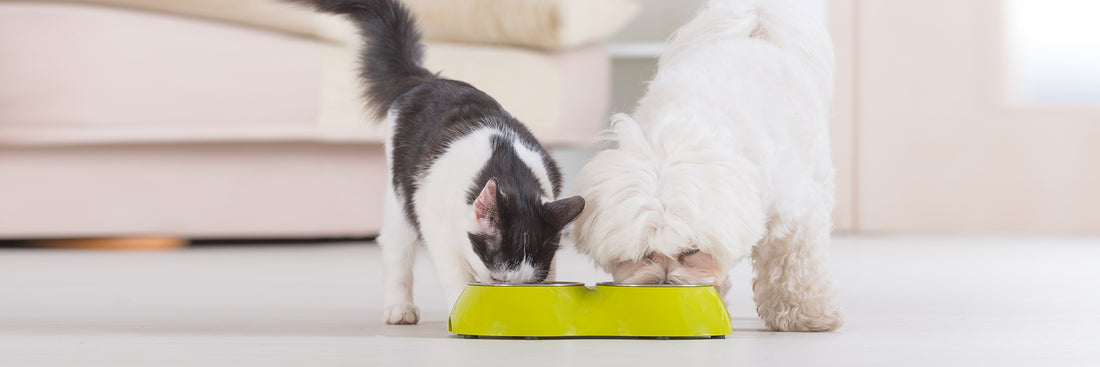Is your pet carrying a little extra weight? As the 11th of October marks Pet Obesity Day, we thought we'd share ten tips you can use to help your furry friend get back in shape.
1. Start a food diary. Record everything your pet is having to eat, including treats and table scraps. Sometimes it simply helps to see where the extra calories might be coming from, as it can help you to recognise unhealthy habits (e.g. extra nibbles when friends and family visit!).
2. Measure their portions. Weighing your pet’s food will make sure you’re not feeding them more than they need. Your vet will be able to give you advice about how much your furry friend needs based on their breed, age and size.
3. Switch to a lower calorie pet food. Specialist weight management pet foods for cats and dogs are readily available, and can help your pet to feel satisfied even as they cut down on calories.
4. Make sure they aren’t being fed elsewhere. It’s easy to tell if anybody is slipping your dog extra treats, but cats can be a different story. Well-meaning neighbours might not be aware that they’re compromising your pet’s health by treating them to extra meals. If your cat wears a collar, a “Please don’t feed me!” tag might do the trick.
5. Avoid human food. It can be hard to resist those puppy dog eyes, but stay strong – much as we love to treat our pets, they have very different nutritional needs to us, so sharing our dinner won’t do their health any favours.
6. Weigh your pet regularly. This will help you to track their progress. Weigh your cat or small dog by firstly standing on the scale yourself, and then hopping on with them – the difference is your pet’s weight.
7. Help your pet to eat more slowly. If your pet tends to wolf down their dinner in one, a slow feeder bowl can help them to slow down and digest their food more fully.
8. Make mealtimes into a game. Hide your dog’s food in their favourite toy to make them work a little harder for their reward, or try placing your kitty’s food in places where they need to jump up or search around. This will encourage them to burn energy by exercising and playing.
9. Be patient. Healthy weight loss takes time, but it’s worth it! The safe rate of weight loss for your cat or dog is approximately 1-2% of their body weight per week. Your vet will be happy to help you set realistic slimming goals for your pet.
10. Increase exercise. Last but certainly not least – increasing exercise is an essential part of keeping your pet’s health in check. You can increase your furry friend’s activity levels in loads of ways – most cats will love to chase a string or laser pointer around, and what dog would say no to more walkies and an extra game of fetch?






Recent post